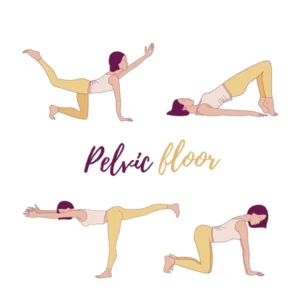Introduction:
In recent years, yoga has gained popularity not just as a physical exercise but also as a holistic approach to health and well-being. For individuals with high-deductible health insurance plans (HDHP), the question arises – can you pay for yoga with your Health Savings Account (HSA)? In this article, we’ll explore the ins and outs of using your HSA, Flexible Spending Account (FSA), or Health Reimbursement Arrangement (HRA) to cover the costs of yoga and the key considerations associated with it.
Understanding HSA, FSA, and HRA Eligibility for Yoga:
If you have an HDHP, you may be eligible to use your HSA, FSA, or HRA for yoga expenses. However, it’s crucial to note that a letter of medical necessity is typically required for reimbursement. This letter, often prepared by your healthcare provider, explains why yoga is necessary for your well-being. For doctors and medical professionals, a sample template is provided to facilitate the process.
HSA Fast Facts:
Health savings accounts (HSAs) were established as part of the Medicare Prescription Drug, Improvement, and Modernization Act in 2003. They are exclusively available with HDHPs. Notably, the 2020 CARES Act expanded HSA coverage to include over-the-counter medications and menstrual care products.
Contributions to an HSA can be made on a pre-tax basis by employers and/or employees, making it a triple tax-advantaged account. Additionally, funds within an HSA can be invested, offering a unique opportunity for tax-free earnings. However, it’s important to be aware that withdrawals for non-approved medical expenses before the age of 65 may incur income taxes and penalties.
Common HSA Providers:
Various financial institutions, including Bank of America, Cigna, Fidelity, and Optum Bank, offer HSA services. Choosing a reputable provider is essential for managing your healthcare expenses effectively.
FSA and HRA Eligibility:
The eligibility criteria for yoga expenses with FSAs and HRAs mirror those of HSAs. While an HDHP is required for an HRA, it is not mandatory for an FSA. This flexibility allows individuals with different insurance plans to explore the option of using their accounts for yoga-related costs.
Navigating Eligibility Challenges:
Determining the eligibility of expenses, including yoga, can be challenging due to the partial list provided by the IRS. In cases of uncertainty, obtaining a definitive answer in writing from your healthcare provider is recommended. This precaution ensures that you make informed decisions about your healthcare spending.
Key Sources for Expense Verification:
To confirm the eligibility of expenses, primary sources such as IRS publications and the CARES Act can be consulted. However, discrepancies may arise, and in such instances, it is advisable to seek guidance from product manufacturer websites, as they often provide detailed information about HSA and FSA eligibility for their products.
Conclusion:
While the benefits of yoga for physical and mental well-being are widely recognized, the financial aspect of incorporating it into your healthcare routine can be confusing. With the right information and a clear understanding of HSA, FSA, and HRA eligibility, individuals can navigate the complexities and potentially use their accounts to cover yoga expenses. Always consult with your HSA administrator or health insurance provider to ensure compliance with the latest regulations and guidelines before making any purchases. Remember, a healthier you is a happier you, both physically and financially. At My Happy Yoga Place we have students who have been advised by their doctors or healthcare providers to use yoga as a part of their wellness routine. However, we always recommend that you check with your provider first before engaging in any alternative modalities and always listen to your body.




